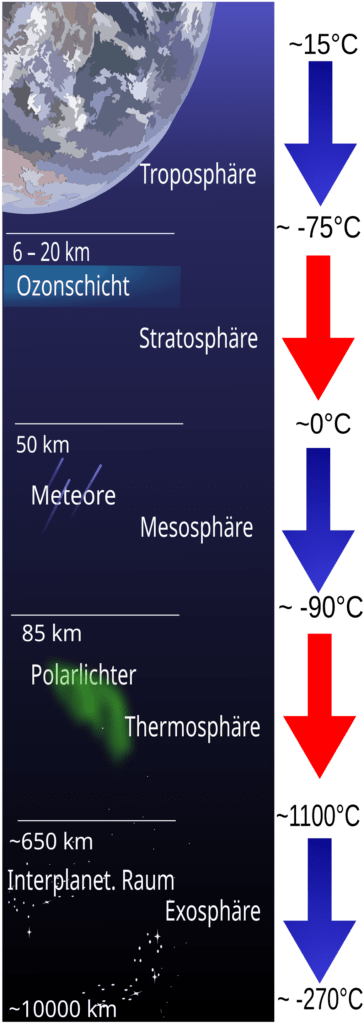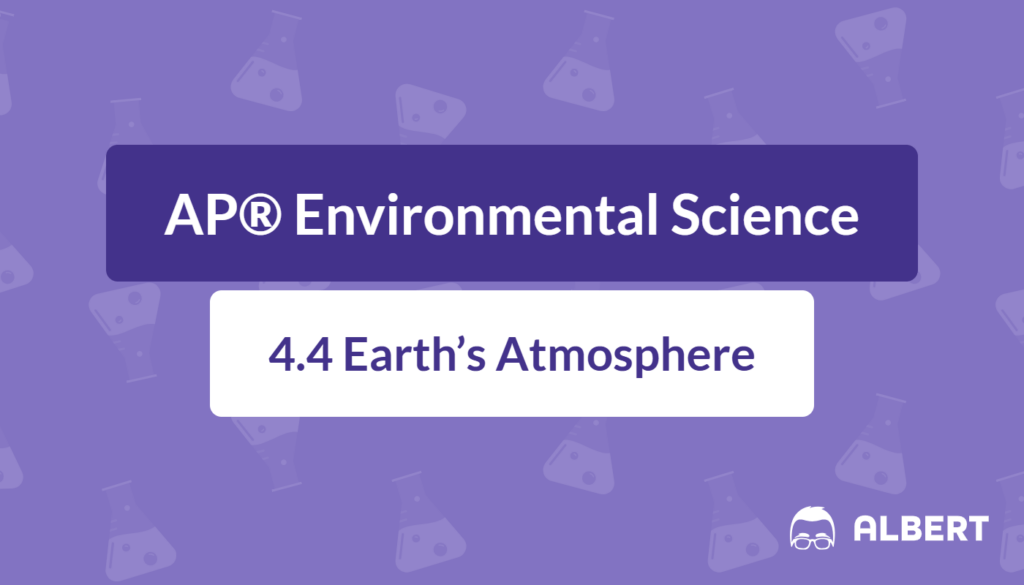What We Review
Introduction
Earth’s atmosphere plays a pivotal role in supporting life on our planet. It shields organisms from harmful solar radiation, stabilizes climate, and circulates essential gases. Understanding the structure and earth atmosphere composition is a central task in AP® Environmental Science, as it relates to weather patterns, climate change, and the cycling of key elements such as carbon. Therefore, this guide focuses on the major gases in the atmosphere, the layers that form it, and how temperature changes with altitude. Moreover, it illustrates how the atmosphere connects with other Earth systems.
By breaking down each concept into small steps and examples, you will find it easier to navigate this fundamental topic. Furthermore, remember the importance of practicing related questions and consulting interactive resources. Ultimately, a solid grasp of the atmosphere’s composition and structure will help you succeed in your AP® Environmental Science studies.
What Is the Earth’s Atmosphere?
The atmosphere is the layer of gases that surrounds our planet and extends from the ground level to outer space. It acts as a protective shell, blocking much of the Sun’s harmful radiation while retaining enough heat to keep Earth habitable. Consequently, life depends on the atmosphere for stable temperatures, oxygen, and protection from meteor bombardment.
Moreover, the atmosphere interacts with the hydrosphere and biosphere to regulate climate. As a result, even small changes in atmospheric composition can influence global temperature, weather patterns, and the carbon cycle. A simple way to visualize the atmosphere is to imagine a cozy, insulating blanket around Earth.
Example: The Atmosphere as a Protective Blanket
- Picture a blanket around your shoulders when you are cold.
- Notice how it traps your body heat, preventing heat from escaping into the surroundings.
- The atmosphere behaves similarly, holding in Earth’s heat through greenhouse gases such as \text{CO}_2.
- Without this blanket, global temperatures would be much lower, making life difficult to sustain.
Composition of Earth’s Atmosphere
The atmosphere is composed of several gases, each with a distinct purpose in maintaining environmental balance. Most of the air is nitrogen (\text{N}_2), followed by oxygen (\text{O}_2) and smaller amounts of other gases, such as argon (\text{Ar}) and carbon dioxide (\text{CO}_2). Trace gases, like neon and helium, are also present in minute amounts. However, even these small concentrations can sometimes affect conditions like weather and climate.
- Nitrogen (\text{N}_2): Around 78%
- Oxygen (\text{O}_2): Around 21%
- Argon (\text{Ar}): Around 0.9%
- Carbon Dioxide (\text{CO}_2): About 0.04% (and rising in recent decades)
- Trace Gases: Tiny percentages but still crucial
Step‑by‑Step Breakdown of Atmospheric Composition
- Imagine you have 100 units of air.
- Approximately 78 of those units consist of nitrogen.
- Around 21 units are oxygen, essential for respiration.
- Less than 1 unit includes argon and other inert gases.
- A fraction of 1 unit is carbon dioxide, which fuels photosynthesis and influences the carbon cycle.
- Lastly, trace gases make up the remaining tiny fraction and can vary over time and location.
Layers of the Earth’s Atmosphere
Scientists divide the atmosphere into layers based on temperature gradients. These layers include the troposphere, stratosphere, mesosphere, thermosphere, and exosphere. Each layer behaves differently due to variations in temperature, density, and chemical composition.

- Troposphere:
- Lowest layer, extending from the ground to about 8–16 km in altitude.
- Weather phenomena, such as clouds and storms, occur here.
- Temperature typically decreases with height.
- Stratosphere:
- Located above the troposphere, up to around 50 km.
- Contains the ozone layer, which absorbs harmful UV radiation.
- Temperatures gradually increase as altitude rises.
- Mesosphere:
- Extends up to about 85 km.
- Meteor trails generally burn up in this layer.
- Temperature decreases with altitude, making it one of the coldest regions of the atmosphere.
- Thermosphere:
- Ranges from roughly 85 km to 600 km.
- Temperatures can rise to extremely high levels due to solar radiation.
- The auroras (northern and southern lights) occur here.
- Exosphere:
- Outermost layer, transitioning into outer space.
- Gas molecules are sparse, and direct boundaries become less defined.
- This layer blends gradually into the vacuum of space.
Example: Weather and Climate in the Troposphere
- Warm air near Earth’s surface rises, carrying moisture upward.
- As it rises, air pressure decreases, causing it to expand and cool.
- Condensation of water vapor then forms clouds.
- If clouds become thick and heavy, precipitation occurs in the form of rain or snow.
- Consequently, daily weather events all happen within the troposphere, influenced by various geographic and atmospheric conditions.
Temperature Gradients in the Atmosphere
Temperature patterns vary in each atmospheric layer because of how solar energy is absorbed. The troposphere cools with increasing altitude, while the stratosphere warms due to ozone absorbing ultraviolet light. However, other layers, like the thermosphere, experience intense heating because of high-energy radiation. Additionally, temperature inversions—when cooler air becomes trapped under a layer of warmer air—can have profound effects on weather, trapping pollutants and affecting air quality.
Example: Temperature and Air Pressure
- Air near the surface is warmer and heavier.
- As you ascend a mountain, air density decreases, so air pressure drops.
- Lower pressure leads to expansion and cooling of rising air masses.
- Hence, mountain climates are often colder than lowland areas.
- Inversions occur when a boundary of warm air prevents cooler air below it from escaping, holding pollutants close to ground level.
The Role of the Atmosphere in Earth’s Systems
The atmosphere is interconnected with the geosphere (soil and rock), hydrosphere (water bodies), and biosphere (living organisms). These interactions drive weather patterns, ocean currents, and even the population growth model for certain species influenced by climate factors. Consequently, the balance of gases, including greenhouse gases like \text{CO}_2, affects the carbon cycle and Earth’s overall energy budget.
- The carbon cycle relies on plant uptake of atmospheric carbon dioxide for photosynthesis.
- Rainfall patterns shaped by atmospheric circulation influence soil formation and nutrient distribution.
- Wind-driven ocean currents redistribute heat around the globe.
- Renewable energy sources, such as wind power, depend on atmospheric movements to function effectively.
Example: How the Atmosphere Affects Ocean Currents
- Solar heating creates regional differences in air pressure.
- Pressure differences generate wind patterns that drive ocean surface currents.
- Warm currents move from equatorial regions to higher latitudes, transferring heat.
- This circulation moderates climates and impacts marine ecosystems.
- Disruptions in atmospheric patterns—like El Niño events—can alter ocean currents, influencing global weather and fisheries.
Key Vocabulary
- Atmosphere: The layer of gases surrounding a planet, serving as a shield and heat regulator.
- Troposphere: The lowest atmospheric layer where most weather events happen and temperature decreases with altitude.
- Stratosphere: The second layer above Earth’s surface, home to the ozone layer and characterized by rising temperatures.
- Mesosphere: The middle layer that cools significantly with altitude and protects against meteoroids.
- Thermosphere: A layer with very high temperatures caused by intense solar radiation, where auroras occur.
- Exosphere: The outermost layer of Earth’s atmosphere, transitioning into space with extremely thin air.
Conclusion
The study of Earth’s atmosphere offers critical insights into how our planet maintains hospitable conditions. Every layer, from the troposphere to the exosphere, contributes to weather and climate processes, while the composition of gases regulates ecosystems and the carbon cycle.
Finally, consider creating a labeled diagram of the atmospheric layers to visualize temperature changes across altitudes more clearly. For additional learning, explore reputable online simulators and practice quizzes that test your knowledge of atmospheric dynamics. By strengthening these foundational concepts, you will be well on your way to mastering crucial AP® Environmental Science topics and understanding the importance of preserving our planet’s protective blanket.
Sharpen Your Skills for AP® Environmental Science
Are you preparing for the AP® Environmental Science test? We’ve got you covered! Try our review articles designed to help you confidently tackle real-world AP® Environmental Science problems. You’ll find everything you need to succeed, from quick tips to detailed strategies. Start exploring now!
- AP® Environmental Science: 3.9
- AP® Environmental Science: 4.1
- AP® Environmental Science: 4.2
- AP® Environmental Science: 4.3
Need help preparing for your AP® Environmental Science exam?
Albert has hundreds of AP® Environmental Science practice questions, free response, and full-length practice tests to try out.








